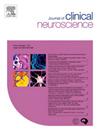Deep brain stimulation within a multi-center US-based healthcare system – A descriptive epidemiologic review from 2010 through 2021
IF 1.8
4区 医学
Q3 CLINICAL NEUROLOGY
引用次数: 0
Abstract
Background
Given recent advancements in deep brain stimulation (DBS), practice variation and outcomes in large, community-based practices are important to understand. We sought to describe a well-defined cohort of patients who underwent DBS placement within a US-based integrated healthcare system on the West Coast and including Hawaii, over 12 years.
Methods
Patients who underwent initial DBS placement were identified using Kaiser Permanente’s electronic health record (2010–2021). Crude cumulative implantable pulse generator (IPG) replacement, reoperation, and mortality probabilities were calculated as 1 minus the Kaplan-Meier estimator. 90-day incidence of emergency department (ED) visits and readmissions was calculated as the number of patients with the event of interest over the number of patients at risk.
Results
1,158 patients had a complete DBS system placed by 12 surgeons across 7 facilities in the healthcare system. 769 patients received bilateral systems (674 with 2 leads and 1 IPG and 95 with 2 leads and 2 IPG), while 389 received unilateral systems. Following DBS placement, 14.3 %, 8.5 %, and 1.2 % had a 90-day ED visit, readmission, and infection, respectively. Median time to IPG replacement was 3.5 years. At 3-years follow-up, 14.5 % had an IPG replacement and 18.1 % had a reoperation; 5-year mortality was 9.3 %.
Conclusion
This study highlights the sum of practices over a decade in a large community-based healthcare system. In particular, original implantation techniques varied, and utilization of rechargeable systems increased over time. Given the incidence of readmissions, ED visits, and reoperations, future study is needed to understand modifiable risk factors to mitigate unwanted outcomes.
美国多中心医疗保健系统中的深部脑刺激- 2010年至2021年的描述性流行病学回顾
鉴于深部脑刺激(DBS)的最新进展,了解大型社区实践的实践变化和结果非常重要。我们试图描述一个定义明确的队列患者,这些患者在美国西海岸的综合医疗系统中接受了DBS安置,包括夏威夷,超过12年。方法使用Kaiser Permanente的电子健康记录(2010-2021)确定首次接受DBS放置的患者。粗累积植入式脉冲发生器(IPG)替换、再手术和死亡概率计算为1减去Kaplan-Meier估计量。90天急诊科(ED)就诊和再入院的发生率计算为发生感兴趣事件的患者数量比有危险的患者数量。结果共有1158名患者接受了由12名外科医生在医疗系统的7个设施中放置的完整DBS系统。769例患者接受双侧系统(674例2导联+ 1 IPG, 95例2导联+ 2 IPG), 389例接受单侧系统。在植入DBS后,14.3%、8.5%和1.2%的患者分别出现了90天的急诊科就诊、再入院和感染。更换IPG的中位时间为3.5年。在3年的随访中,14.5%的患者进行了IPG置换,18.1%的患者再次手术;5年死亡率为9.3%。结论:本研究强调了一个大型社区医疗保健系统十多年来的实践总和。特别是,原始植入技术各不相同,可充电系统的利用率随着时间的推移而增加。考虑到再入院、急诊科就诊和再手术的发生率,未来的研究需要了解可改变的风险因素,以减轻不想要的结果。
本文章由计算机程序翻译,如有差异,请以英文原文为准。
求助全文
约1分钟内获得全文
求助全文
来源期刊

Journal of Clinical Neuroscience
医学-临床神经学
CiteScore
4.50
自引率
0.00%
发文量
402
审稿时长
40 days
期刊介绍:
This International journal, Journal of Clinical Neuroscience, publishes articles on clinical neurosurgery and neurology and the related neurosciences such as neuro-pathology, neuro-radiology, neuro-ophthalmology and neuro-physiology.
The journal has a broad International perspective, and emphasises the advances occurring in Asia, the Pacific Rim region, Europe and North America. The Journal acts as a focus for publication of major clinical and laboratory research, as well as publishing solicited manuscripts on specific subjects from experts, case reports and other information of interest to clinicians working in the clinical neurosciences.
 求助内容:
求助内容: 应助结果提醒方式:
应助结果提醒方式:


